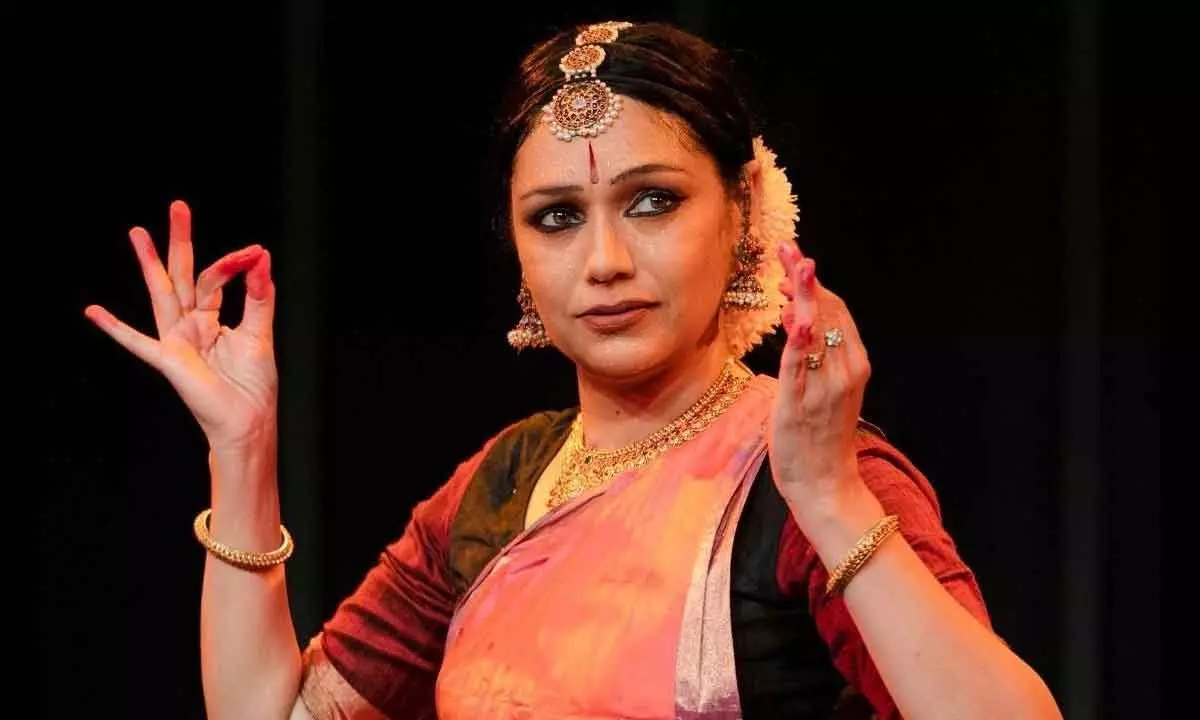Live
- Sudanese army recaptures capital of Sinnar State in central Sudan
- Kishkindha Kaandam Review: Some movies prove not to compromise in having a good cinematic experience and this is one of them
- Son-rise: Hemant Soren grows taller as tribal leader, makes father proud
- ISL 2024-25: 10-man NorthEast United FC hold on to take three points vs Punjab FC
- BGT 2024-25: Jaiswal’s application, commitment to form a partnership was so impressive, says Gilchrist
- BGT 2024-25: Personally, I am very happy with my performance, says Harshit Rana
- Pakistan's Lahore remains world's most polluted city despite light drizzle
- Asha Nautiyal retains Kedarnath for BJP, to be back as MLA after 12 years
- India leads world in science, innovation research: Minister
- Flash flood in Indonesia's South Tapanuli claims two lives
Just In
Every artiste has personal dialogue with art form: Dancer Rama Vaidyanathan


Sangeet Natak Akademi Award-winning dancer Rama Vaidyanathan's latest 'New Dimensions to Margam' born out of these ventures will have its India preview on April 21 at India Habitat Centre in the national capital as part of Madhvi Festival
For several years now, she has been venturing into new avenues of Bharatanatyam with respect to vocabulary, poetry, and treatment. Choreographing multiple dance compositions that can become a part of the traditional repertoire, Sangeet Natak Akademi Award-winning dancer Rama Vaidyanathan's latest 'New Dimensions to Margam' born out of these ventures will have its India preview on April 21 at India Habitat Centre in the national capital as part of Madhvi Festival.
One of the directors of Ganesha Natyalaya, the dancer says it has been an exciting journey discovering her dance form, celebrating it, and adapting it to her body, mind, and intellect. "Every artist has her personal dialogue with her art form, and it is this phenomenon that helps the art form to evolve. In my case as well, I was able to harness the vocabulary that I learned from my gurus and search for a fresh impetus and different approach which then became my own individual statement," she tells.
For someone who started creating her own pieces quite early in life, there was never any apprehension about what the purists would think. "Well, I was too busy having fun with my dance, and doing that, you seldom stop to think of its repercussions. The madness of exploring, deciphering, and reconstructing had engulfed me so strongly that all I could do was to throw myself wholeheartedly into creating new compositions," she recalls.
Anyone who has witnessed Vaidyanathan on stage can effortlessly gauge that her performances go beyond grammar and conventions. She says it is imperative to go beyond the form because the same is the basic medium of communication and its essence and beauty will be enhanced only if there is a soulful liberation in its execution. "It is a tool that we need to utilise with aesthetics and sensitivity. It is a path need to walk on to discover new spaces and embark on exciting journeys."
Managing to maintain a fine balance between tradition and innovation, the dancer says it is impossible for her body to move in a 'un - Bharatanatyam' manner. "My technique has always been grounded," she adds. Staying in Delhi, Vaidyanathan has always been exposed to multiple art forms and follows sculpture, painting, literature, music, and genres of dance as well. "This has helped me open several doors in my mind and has widened my perspectives. Particularly with regards to poetry in different languages that find a lot of space in my repertoire."
Pleased with the many performance courses that have been introduced by different private universities, she feels dance is serious, and needs to be studied just as other disciplines of learning are done. Along with the actual practical stream of dancing, such courses teach about the treatises on dance, its history, social connotations, and areas of research. "This gives the dancer a very holistic approach to dance and at the end of the course, it throws open many more vistas of exploring for the student. Performance is just one aspect of dance, there are many other areas, especially scholarship that we actually need many more youngsters to adopt."
Stressing that the country needs more professional setups for dance -- with proper payments, opportunities for performance and research, where artists can make a living from art, Vaidyanathan adds that there is also a need for schemes for pensions for aged artistes and scholarships for young dancers from weak economic backgrounds who do not have resources and the capacity to enter into this world.
She also feels that the private sector needs to support classical dance more liberally considering in India the government is still engaged in providing basic medical needs and education to a large section of our society. "It is definitely the responsibility of the society as a whole to preserve, cherish and propagate our ancient arts."

© 2024 Hyderabad Media House Limited/The Hans India. All rights reserved. Powered by hocalwire.com






